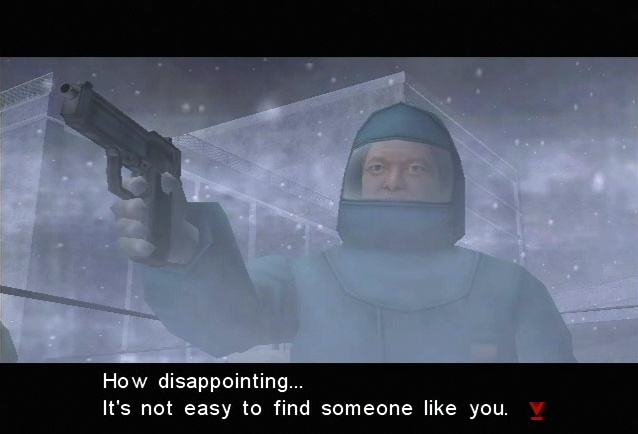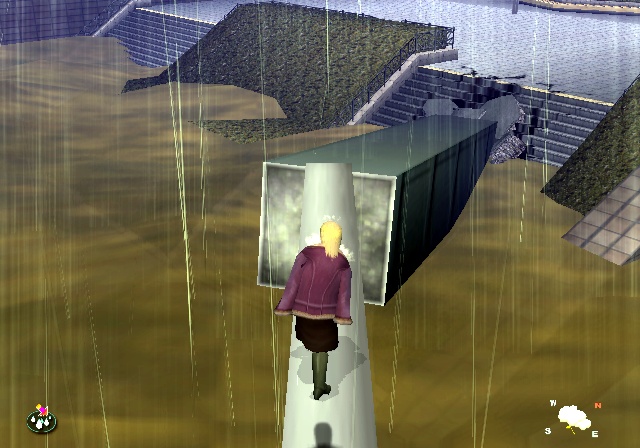Raw Danger is the spiritual sequel to Irem's 2003 PlayStation 2 release Disaster Report, an interesting survival horror game that traded on the unpredictability of a natural disaster rather than the genre's usual staple of the shambling undead. It was an often-suspenseful experience hindered by a short running time and a game engine that was technically lacking. While Raw Danger doesn't look much better than Disaster Report, it's a much bigger game with a wide cast of playable characters and an overarching story that crisscrosses in an almost Robert Altman-style fashion. It's got a heap of problems, including some really lousy graphics, stilted voice acting, and gameplay that can be just as contrived and awkward as it can be suspenseful, but the way it weaves its story can still make for a fascinating experience.

Rather than presenting a single, persistent narrative, Raw Danger actually consists of several interconnected vignettes that all take place during a massive, cataclysmic Christmas Eve flood that hits the idyllic island metropolis alternately referred to as Geo City and Del Ray. You'll start the game playing as Joshua Harwell, a college student working as a waiter at a high-toned and fancy to-do when the flood first starts wreaking havoc on the city. Joshua's story is pretty straightforward and revolves around juggling his own survival as the waters rise and the city crumbles beneath his feet, while helping fellow waitperson Stephanie McMurrough find her estranged, ailing stepmother.
Things start to get more interesting during the second story, when you play as Amber Brazil, a young woman wrongly imprisoned for the murder of her brother. It's during this story that you begin to learn about a conspiracy concerning NorCal Pharmaceuticals and Gavin Goldstein, the city's mayor. This is also when the interconnected nature of the individual stories begins to develop, and you see how a decision you made when playing as Joshua Harwell impacts how the story unfolds when playing as Amber Brazil. Some of the choices that you make are superficial, affecting the type of dialogue you hear more than the actual course of the story, though at several points your decisions can affect whether a character will live or die. For better or for worse, it's rarely apparent what the impact of certain decisions will be further down the road. On the one hand, it can make the narrative feel more organic, though on the other, it can be frustrating if you want to see an ideal outcome to the whole story.
You'll play through the disaster as a money-conscious cab driver who lands an intermittently obnoxious journalist as a fare, an insecure schoolgirl, an amnesiac, and, if you play your cards right, reporter Keith Helm, the protagonist from Disaster Report. As you progress, the NorCal conspiracy takes greater prominence, and the crossing of paths becomes more apparent. A throwaway walk-on character from one story will prove central to another, and a seemingly random occurrence will gain meaning when viewed from another character's perspective. Though the actual dialogue can be downright lousy and many of the characterizations ring hollow, it can be a joy to watch the interlocking vignettes unfold from one revelation to the next.
It's just too bad that the gameplay doesn't quite match the quality of Raw Danger's story structure. To its credit, the nature of the gameplay can change pretty radically from character to character. Joshua is a strong, physically fit young man who is able to outrun rushing waters, hoist himself up ledges with his fingers, and climb ladders while carrying an injured person on his back; as such, his story is very action oriented. Amber Brazil, however, is bound in handcuffs, which limits her mobility, and being pursued by the police, which forces her to adopt stealth tactics through much of her story. The taxi driver, naturally, spends most of his time avoiding disaster while behind the wheel of his cab. Still, there are some constants, regardless of who you play as. Everyone has to mind their body heat, which can be sapped by strenuous activity and by getting wet. As they get colder, their movements will slow down, and eventually they'll just collapse. Fortunately you'll find heat sources such as radiators, stoves, and barrel fires, which can restore your body heat, be used to cook energy-replenishing food, and also serve as save points in the game.
The variety does a lot to keep things moving, and there are plenty of breathtaking moments for each character as you face rushing waters, lightning-quick mudslides, crumbling urban infrastructure, and certain threats unrelated to the flood. This jack-of-all-trades approach to the gameplay means that it is an expert in none. The characters' interaction with their environments lacks elegance, and many of the set pieces, while suspenseful, usually have a single correct path that can require a quantity of trial and error to suss out.

Technically uneven presentation was a problem in Disaster Report, and it continues to plague Raw Danger. The people who populate the game look bland and move stiffly, and the Westernization of their appearance from the game's original Japanese release makes for some awkwardness. The city is pretty well realized, with several distinct districts and an overall look that evokes a specific kind of idyllic Asiatic metropolis in the near future, but almost every texture looks like a giant, indistinct, gray smudge. The lack of subtlety in the sound design doesn't really matter when the deafening rush of water is a near-constant, but the quality and tone of the voice acting is all over the map, ranging from inappropriately enthusiastic to sounding like the lines are being read by a text-to-voice computer program.
Regardless of its positive qualities, there's no denying the problems that Raw Danger has. Even if our eyes hadn't spent the past year and a half adjusting to the richer visuals of the new consoles, Raw Danger would still be a pretty unpleasant looking PlayStation 2 game. However, though it may seem like a lot to ask, if you can get past these problems, there's a unique, cinematic experience to be had with Raw Danger.